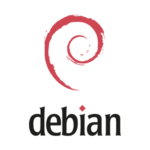
This is the third and final post in the series where we explore the question, “What Linux Is Best For Laptops?”. The “best” Linux operating system for users depends on various factors, including the user’s preferences, needs, level of expertise, and laptop hardware specifications. Linux offers a wide range of free distributions, each with its own strengths and characteristics. In the first post in this series, we looked at the history of Linux, advantages of using it on laptops, and factors to consider when choosing a Linux distro for your laptop. Here is a link to this post. In the second post, we compared several free Linux distributions that are well-regarded for compatibility with laptops. The distros we compared are:
- Debian
- Ubuntu
- Linux Mint
- Elementary OS
- Zorin OS
- Fedora
- Manjaro
- OpenSUSE
- Pop!_OS
You can access the second post here. In this final post in the series, we will look at positive and negative feedback obtained from a collection of user reviews for each of these distros. Analyzing user reviews and testimonials can provide valuable insights into the pros and cons of these Linux distributions on laptops. Keep in mind that individual experiences may vary, but looking at common themes in user feedback can help you understand the strengths and weaknesses of each distribution.
So let’s jump in and start with our analysis of user reviews for these Linux distributions!
1. Debian
Positive Aspects:
1. Stability and Reliability: Debian is renowned for its stability. Users appreciate its excellent resource management and smooth operation without frequent crashes or bugs. This stability is a result of rigorous testing, package verification, and comprehensive bug-tracking
2. Community Support: Debian’s vibrant global community is a major plus. It comprises developers, contributors, maintainers, and users who actively engage in solving problems, discussing solutions, and implementing improvements
3. Security: The security features of Debian are highly rated. Users note that it provides a secure environment, contributing positively to productivity and efficiency
4. Hardware Support: Debian 12, in particular, has been praised for its broad hardware support, including compatibility with the latest graphic cards, NVMe SSDs, USB 3.2, and Wi-Fi 6
5. Package Management: Debian’s Advanced Package Tool (apt) simplifies installation and update processes and management of software, and its repositories offer a wide range of packages and utilities

Negative Aspects:
1. Outdated Software: One common complaint is that the software in Debian tends to be a bit older. This can be a hindrance for users who prefer the latest versions of software applications
2. Learning Curve and User Interface: Some users find Debian challenging due to the learning curve and the habit of using traditional operating systems. The user interface, particularly in some desktop environments, may feel outdated or less polished compared to other distributions
3. Compatibility Issues: There are reports of minor compatibility issues, such as with Pulseaudio in the XFCE desktop environment, and the need for many dependencies when installing additional tools
4. Installation Process: The installation process can be convoluted and not as user-friendly as some would like, especially for those new to Linux or Debian
Overall, Debian Linux is appreciated for its stability, security, and community support, making it a solid choice for many users. However, its somewhat outdated software and user interface, along with installation and compatibility challenges, are areas where users feel improvements could be made.
2. Ubuntu
Positive Aspects:
1. Resource Management: Users appreciate Ubuntu’s efficient management of system resources.
2. System Security: It is recognized for its strong security features.
3. Stability: Ubuntu is noted for its stability and reliability.
4. Wide Software and Hardware Support: It supports a broad range of software and hardware, making it versatile.
5. User Interface: The user interface is generally liked for being user-friendly and intuitive.
6. Performance: Positive remarks are given for its speed and lightweight nature, making it suitable for older hardware.
7. Flexibility and Customization: Users appreciate the high degree of customization possible with Ubuntu.
8. Developer-Friendly: It’s particularly favored among developers for its support for various programming languages and tools.
9. Community Support: The strong Ubuntu community is frequently mentioned as a helpful resource.

Negative Aspects:
1. Limited Support for Specific Software: Some users find it not very useful for specific programs that are not Linux-compatible.
2. Driver Issues: There are complaints about the lack of some drivers, particularly for newer hardware.
3. UI and Usability Issues: Some users find the user interface less intuitive than other operating systems, particularly for beginners.
4. File Management and Dock Issues: Criticisms include clunky file management and an odd side dock.
5. Compatibility with Certain Applications: Some applications, especially proprietary ones, may not run as well on Ubuntu.
6. Complexity for New Users: The learning curve can be steep for users who are new to Linux environments.
7. Issues with Multimedia Support: Some users face difficulties with playing certain media formats or using certain multimedia hardware like wireless headphones.
8. Issues with Lenovo: Some users have reported issues with Lenovo laptops and desktops.
These reviews provide a comprehensive overview of Ubuntu Linux from various users’ perspectives, ranging from software developers to regular users. The overall sentiment is positive, particularly for its performance, customization, and community support, but some issues with software compatibility and user-friendliness are noted.
3. Zorin OS
Positive Aspects:
1. Ease of Installation: Users appreciate the intuitive installation process of Zorin OS, which is straightforward and supports setup in virtual machines using VirtualBox. A live USB installation is also possible, making the distribution accessible for new users
2. Pleasant Desktop Layout: The desktop environment of Zorin OS, based on GNOME, is well-liked for its polished look and familiar design, echoing elements of both Windows and macOS. This approach helps users transitioning from these platforms to feel more at home
3. Quality Themes and Design Features: Zorin OS offers elegant design options, including automatic switching between dark and light themes based on the time of day, and other design elements like a night mode with a blue light filter, touchscreen-optimized layout, and a do-not-disturb mode
4. Smartphone Pairing and Steam Support: The OS supports pairing with Android smartphones through the Zorin Connect app and has Steam support for gamers, although the effectiveness of Steam support might be limited due to the lack of Linux support in many Steam games
5. Windows Compatibility: For users migrating from Windows, Zorin OS supports running Windows applications using WINE, adding to its appeal as a transitional platform

Negative Aspects:
1. Occasional Bugs: Some users have encountered bugs, such as desktop icons briefly disappearing, though these issues haven’t generally led to system crashes
2. Complexity for Beginners: Despite its focus on newcomers to Linux, users have reported that customization and retrofitting Zorin OS can require some training time, and operations via the command line tool can be complex for beginners
3. Cost of Pro Version: The Pro version of Zorin OS, which costs around $40, offers more high-quality desktop layouts and additional functions. However, some users feel that the price of the Pro version may not be fully justified given its offerings
In summary, Zorin OS is often praised for its user-friendly design, ease of installation, and familiar desktop environment, making it a good choice for those new to Linux or transitioning from Windows. However, the complexity of customization and the cost of the Pro version are points of consideration for potential users.
4. Elementary OS
Positive Aspects:
1. User Experience and Design: Elementary OS is praised for its elegant and simple design. The desktop environment is based on GNOME, offering a polished and familiar look inspired by Windows and macOS. This makes it appealing, especially for users transitioning from those operating systems
2. Privacy-Focused: Unlike some other distributions, Elementary OS is noted for respecting user privacy. It doesn’t collect user data or push ads based on user behavior, making it a strong choice for those concerned about privacy
3. Firmware Updates and Hardware Compatibility: The OS has good support for firmware updates from major hardware vendors like Dell, Lenovo, HP, Intel, Logitech, and Wacom. This indicates strong compatibility with a variety of hardware, which is a crucial aspect for a smooth user experience on different laptop and desktop configurations

Negative Aspects:
1. Application Availability and Flatpak Integration: A significant change in Elementary OS 6 is that the AppCenter now primarily lists applications made for Elementary OS and packaged as Flatpaks. While this move towards a Flatpak-only app store is seen as forward-thinking, it has also added complexity for new users. Integrating and managing applications, especially those not available as Flatpaks, can be less straightforward for newcomers to Linux
2. Outdated Repositories and Release Cycles: Users of Elementary OS have expressed concerns over the outdated repositories of Ubuntu 18.04, on which the OS is based. This has implications for software availability and updates. The release cycle is also less predictable compared to some other distributions like Ubuntu, which may affect users who prioritize access to new and up-to-date software
3. System Performance: While Elementary OS is generally well-received for its performance, there are reports of occasional bugs and system issues. These are not typically system-crashing but can be inconvenient, such as desktop icons temporarily disappearing
In summary, Elementary OS is appreciated for its design, privacy focus, and firmware support, making it attractive to users who value a sleek, user-friendly interface and privacy. However, its approach to software management and the occasional bugs are areas where some users feel there is room for improvement.
5. Linux Mint
Positive Aspects:
1. Ease of Use and User Interface: Many users find Linux Mint extremely easy to use, especially when compared to other Linux distributions. Its interface, particularly the Cinnamon desktop environment, is often highlighted for its elegance and user-friendliness
2. Out-of-the-Box Experience: Linux Mint is appreciated for its ability to work straight out of the box with full multimedia support. This includes having a range of integrated apps for productivity, graphic design, and multimedia
3. Stability and Efficiency: Users often cite Linux Mint’s stability and efficiency as major advantages. The distribution is known for being stable and providing a smooth experience even on older hardware
4. Low Maintenance and Free of Cost: Linux Mint requires very little maintenance, and it is free of cost. It’s an open-source project, which appeals to users who prefer a community-driven approach to software development
5. Compatibility with Older Hardware: Linux Mint is noted for its ability to bring older PCs back to life, offering good performance without the resource heaviness of more demanding operating systems like Windows 10

Negative Aspects:
1. Requires More Computing Power than Some Alternatives: Some users have noted that Linux Mint requires more computing power compared to other lightweight Linux distributions. This might be a concern for very old or low-spec machines
2. Lacks Device Manager and Cutting-Edge Features: While Linux Mint is user-friendly and stable, it may lack some of the cutting-edge features found in other distributions. This might be a downside for users looking for the latest innovations in their OS
3. Apparent Learning Curve for New Users: For those completely new to Linux, there may still be a learning curve, particularly when it comes to using the command line or finding alternatives to familiar Windows applications
In summary, Linux Mint is highly regarded for its ease of use, stability, and user-friendly interface, making it a great choice for both beginners and experienced users. However, its performance on very old hardware and the absence of some advanced features are points users should consider.
6. Fedora
Positive Aspects:
1. Cutting-Edge Software: Fedora is appreciated for offering the latest software packages, making it a suitable platform for research and development.
2. Good Balance of Stability and Experimentation: It combines the stability of Red Hat Enterprise Linux/CentOS systems with more experimental software, appealing to users who need a reliable yet innovative environment.
3. Useful for Special-Purpose Tasks and Test Labs: Fedora is highly regarded for experimental use and test lab situations due to its advanced features and software.

Negative Aspects:
1. Stability Concerns Compared to CentOS: While Fedora is stable, it doesn’t match the stability of CentOS, which might be a concern for users seeking an ultra-stable environment.
2. End-User Usability Issues: Some users have noted usability issues, particularly with the user interface and user experience, which can be a downside for those who prefer more intuitive systems.
Overall, Fedora Linux is well-received for its innovative approach and advanced software offerings, making it a good choice for experimental and R&D purposes. However, its stability and usability issues are areas where some users feel improvements could be made.
7. Manjaro
Positive Aspects:
1. User-Friendly and Accessible: Manjaro is known for being more user-friendly than Arch Linux, from which it is derived. It comes pre-configured and is easier to use, particularly for beginners
2. Easy Installation: Unlike Arch Linux, Manjaro offers a graphical installer, making the installation process much simpler. There’s also an option for Manjaro Architect, a terminal-based installer for more advanced customization
3. Good Hardware Support: Manjaro is praised for its excellent hardware recognition and support. It includes a hardware detection tool (MHWD) that auto-installs drivers, easing the setup process for various hardware configurations
4. Variety in Desktop Environments: Manjaro provides options to choose from several desktop environments during installation, including KDE, Xfce, and GNOME, as well as others supported by the Manjaro Community
5. Access to Arch User Repository (AUR): Manjaro users have access to the massive AUR, which is known for its extensive range of applications. This is particularly beneficial for users seeking a wide variety of software options
6. Kernel Management: Manjaro offers a GUI for kernel management, making it easier for beginners to switch between different kernels according to their needs
7. Performance: Users have noted that Manjaro feels snappier and more responsive compared to some other distributions, such as Ubuntu or its derivatives

Negative Aspects:
1. Occasional Stability Issues: Some users have reported stability concerns with Manjaro, particularly when comparing it to distributions like CentOS
2. Graphics Driver Limitations: There are observations that Linux, in general, does not have graphic drivers that are as good as those for Windows, which might affect game performance and battery life on Manjaro
3. Complexities with Dual Booting: Setting up a dual-boot system with Manjaro and another OS, like Windows, can be challenging and may require careful planning and execution
4. Pre-installed Software Preferences: Some users have criticized Manjaro for including certain pre-installed software, considering them unnecessary and contributing to system bloat
In conclusion, Manjaro Linux is well-regarded for its user-friendliness, ease of installation, good hardware support, and access to a wide range of software through the AUR. However, its occasional stability issues, challenges with graphics drivers, and complexities in dual-boot setups are points that potential users should consider
8. openSUSE Leap
Positive Aspects:
1. Stability and Reliability: Users appreciate OpenSUSE Leap’s stability and reliability, especially for running applications that are not Windows-specific. It is particularly suited for development and production environments, offering a stable base for applications and servers
2. Easy Maintenance and Updates: The system is easy to maintain, thanks in part to YaST, a tool for managing software packages. The online update mechanism keeps the system up-to-date with patches, contributing to its overall stability
3. Support for Development Environments: OpenSUSE Leap is well-regarded for running various Integrated Development Environments (IDEs) like Netbeans for Java or VS Code for Python, making it a versatile platform for software development
4. Compatibility with Latest Hardware: The operating system is known to be compatible with the latest hardware, ensuring that users can leverage new technology effectively

Negative Aspects:
1. Software Package Versions: While OpenSUSE Leap offers a wide range of software packages, they are not always the latest versions. This might be a drawback for users who need the most current software for their tasks
2. Commercial Package Availability: Some users have noted that commercial packages are not always available in OpenSUSE Leap, which could be a limitation for certain use cases
3. Faster Adoption of Latest Package Versions: Although stability is a key feature, the adoption of the latest versions of packages might be slower compared to other distributions. This could affect users who require cutting-edge software versions for their work
In summary, OpenSUSE Leap is a stable, reliable, and easy-to-maintain operating system well-suited for development and production environments. Its compatibility with the latest hardware and support for a range of software packages make it a strong choice for various use cases. However, the slower adoption of the latest software versions and limited availability of commercial packages are potential downsides to consider.
9. Pop!_OS
Positive Aspects:
1. Flatpak Support: Pop!_OS 20.04 introduced support for Flatpak applications in its Pop!_Shop, offering users a wider range of software options and the convenience of installing Flatpak or Debian packages
2. Updated Linux Kernel: Pop!_OS tends to offer newer Linux Kernel releases even for its LTS versions, which is beneficial for users with the latest hardware, as it ensures better compatibility and performance
3. Effective Application Launcher: The inclusion of an application launcher in Pop!_OS provides a quick and convenient way to launch and navigate between applications
4. Custom Installer Experience: System76 has developed its own installer for Pop!_OS, offering a user-friendly and streamlined installation process similar to OEM installations
5. Ease of Use with Nvidia Systems: Pop!_OS is highly praised for its seamless setup, especially for systems with Nvidia graphics. It eliminates the hassle of manually installing Nvidia drivers, which is a significant advantage over other distributions like Linux Mint and Ubuntu
6. Performance and Workflow: Pop!_OS is designed to provide a functional and efficient workflow, especially for GNOME users. The desktop environment is minimal and intuitive, which can enhance productivity
7. Hardware Compatibility: Pop!_OS shows strong compatibility with a wide range of hardware configurations, including support for server processors, virtual machines, and various storage options
8. Aesthetics: The distribution is noted for its modern and clean aesthetic, featuring its own GTK theme and icon pack, which adds to the overall user experience

Negative Aspects:
1. Keyboard Shortcut Changes: Some users may find the changes in keyboard shortcuts from earlier versions of Pop!_OS to be inconvenient, especially if they were accustomed to the previous layout
2. Hybrid Graphics Switching: The need to restart the system when switching between integrated and dedicated graphics can be inconvenient for some users
3. Default Layout Preferences: Some users have expressed dissatisfaction with the default layout of Pop!_OS, preferring more traditional or different desktop layouts
4. Limited Customization for HiDPI Scaling: There have been some concerns about the automatic scaling for HiDPI screens in Pop!_OS, with some users preferring the customization options available in other distributions like Ubuntu
Overall, Pop!_OS is well-regarded for its user-friendly features, hardware compatibility, and modern aesthetics. However, its keyboard shortcuts and default layout may not appeal to all users, and some may find the customization options for display scaling to be limited.
Conclusion

The above observations are generalizations based on common user feedback, and individual experiences may vary.
It’s important to note that the “best” Linux distribution is subjective and depends on many factors, such as individual preferences, technical expertise, and specific use case requirements. Beginners may prefer more user-friendly distributions, while more experienced users might appreciate a more flexible and customizable distribution.
It’s often a good idea to try different distributions by creating live USBs or running them in a virtual machine before deciding which one best suits your needs. It’s common for users to try several distributions before settling on one.
This concludes our series on “What Linux is best for laptops?”. I hope that you found the information helpful. If you have any questions about the content, please feel free to reach out to me in the comments below.
All the best and best regards,
Walter
No responses yet